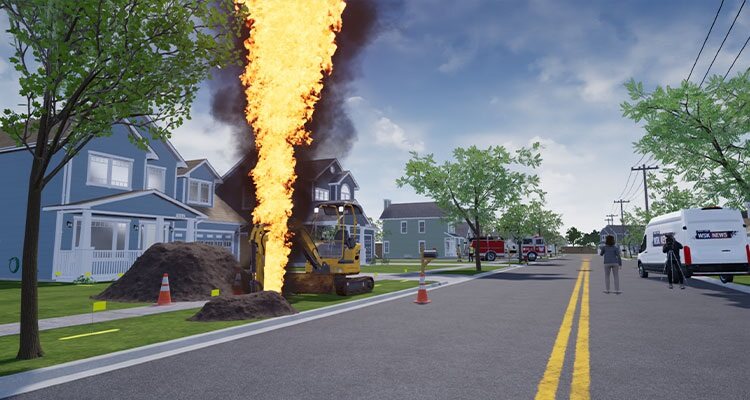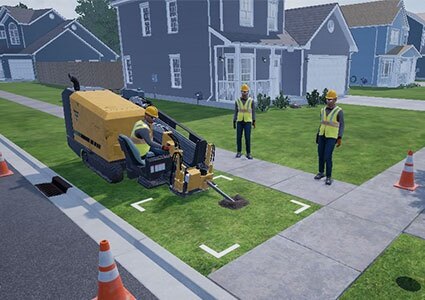
Using AR/VR technology to preserve safety and enhance training efficiency in the energy industry By Vi Kellersohn
From recruiting and training to reskilling, Virtual and Augmented Reality (VR/AR) have the potential to revolutionize learning and training in the energy sector. Given safety considerations for hazardous environments, these methods allow employers to assess skills, qualifications, training benchmarks and more, while providing a safe and immersive environment.
Throughout the energy, oil, and gas industries, securing qualified labor needed to maintain efficiency has been increasingly challenging over the last decade. Major boom and bust cycles have amplified the structural-demographic problems that are working against recruiters, causing employers to look for more efficient ways to attract, assess, onboard, and upskill their talent.
Current challenges in the energy sector
Due in part to the level of specialized skill required, a growing skills gap and safety concerns, training and re-skilling for oil and gas employees continues to be a huge pain point for employers.
As many of the industries’ most experienced and skilled employees prepare to retire, preserving their historical knowledge is of utmost importance. Their level of skill is not something that can be taught in a classroom, but rather through hands-on experience with the benefits of repetition and in-the-moment feedback.
According to the Society for Human Resource Management, for all industries, the cost of training a new employee independent of industry is estimated at approximately $4125. This cost is typically significantly higher for oil and gas employers, as roles often require work in high-risk environments like extreme weather conditions, with heavy machinery, at great heights, with heavy voltage equipment, at increased risk for exhaustion and fatigue as well as fire, explosion and more. Taking the higher risk into consideration, it can also be difficult to assess a trainee’s emotional response when using only legacy methods, leaving room for error when introduced to them in the field.
Benefits of AR/VR technology for training in the oil and gas industry
Virtual reality training solutions like those offered by Oberon Technologies® capture tribal knowledge and increase the speed and efficacy of training thereby reducing the odds of costly human error and safety and environmental hazards.
VR increases the safety of front-line workers and communities by having utilities personnel well trained and prepared for any emergency. For example, in a recent partnership with GTI Energy, a leading non-profit research and training organization focused on energy transition solutions, Oberon Technologies® created a module designed to prepare trainees to ‘make safe’ the scene of an emergency to ensure the protection of life and property, while collaborating with emergency response teams.

The module uses a fully immersive virtual reality training course, integrated into overall training to increase trainee engagement, and improve overall retention by 80 percent or more. Scenarios address performing emergency operations, as defined by the emergency response plan and in compliance with federal regulations. A rig operator trainee can learn protocol to deal with an unexpected explosion, or a pipeline technician trainee can train on identifying potential leaks across a pipeline thousands of miles away from them.
Knowing your employees’ capabilities before they are put into a real-world situation allows for better understanding of where additional time needs to be spent to minimize the skills gaps and critical errors caused by lack of experience. Perhaps nothing is more important for long term knowledge retention than effective feedback. Since training takes place in a digital environment, each session can be recorded for playback and feedback at a later time. Analytics can also be run against the captured data to identify trends and areas needing more attention.
Given the already high cost, consideration for training efficiency is of the utmost importance. VR training methods allow for unlimited use. Once the environment has been created, it can be used and reused on an almost limitless basis. A recent 2020 PWC study shows that employees completed VR programs four times faster than in-person training and 1.5 times faster than e-learning. In addition, VR training results in learning retention rates of up to 80 percent one year after training, compared to 20 percent just one week after traditional training.
Typical use cases for AR/VR modules include:
■ New employee onboarding
■ Facility and working environment familiarization
■ Equipment location and identification
■ Emotional evaluation (testing for fear of heights, claustrophobia, motion sickness, etc.)
■ Standard operating procedures
■ Advanced skills training
■ Hazard identification
■ Inspection procedures
■ Maintenance procedures
■ Emergency response procedures
■ Safety and compliance training
■ Skills and environment screening
Vi Kellersohn
www.oberontech.com
Vi Kellersohn is the chief marketing officer of Oberon Technologies®.
For over 20 years Vi has helped create co-marketing campaigns, success stories, and business case and ROI reports for B2B technology organizations. Oberon Technologies® is the leading provider of innovative extended reality (XR) training and information delivery technologies. Oberon leverages both physical and virtual worlds to deliver critical business information for its clients. From collaborative web authoring tools to immersive virtual reality (VR) environments, Oberon’s consultants architect, design, implement, and optimize solutions for companies that value safety and efficiency.